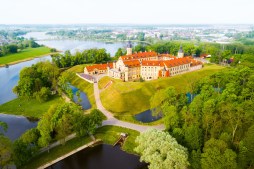Unraveling the Mystery: Exploring South American Archaeological Wonders

South America is a continent rich in history and cultural heritage. From the ancient Inca civilization to the enigmatic Nazca lines, there are countless archaeological wonders waiting to be explored. These sites not only offer a glimpse into the past but also provide valuable insights into the lives of our ancestors. In this article, we will delve into some of the most fascinating South American archaeological wonders and unravel their mysteries.
Machu Picchu: The Lost City of the Incas
Hidden high in the Andes Mountains of Peru, Machu Picchu is perhaps one of the most iconic archaeological sites in South America. Built by the Inca civilization around 1450 AD, this ancient city was abandoned and forgotten for centuries until its rediscovery in 1911 by Hiram Bingham. Today, Machu Picchu attracts thousands of visitors each year who come to marvel at its impressive stone terraces, intricate architectural features, and breathtaking panoramic views.
The purpose of Machu Picchu has long been debated by archaeologists. Some believe it served as a royal estate for Inca rulers, while others suggest it may have been a ceremonial or religious site. Regardless of its original function, one thing is certain – Machu Picchu is an extraordinary testament to the ingenuity and advanced engineering skills of the Inca people.
Nazca Lines: Aerial Artistry from Ancient Times
Located in southern Peru, the Nazca Lines are an enigmatic collection of geoglyphs etched into the desert floor between 500 BC and 500 AD by an ancient civilization known as the Nazca culture. These massive drawings depict various animals, plants, geometric shapes, and human-like figures that can only be fully appreciated from above.
The purpose behind creating these enormous artworks remains a mystery. Some theories suggest that they were used for religious or ceremonial purposes, while others propose they served as an astronomical calendar or even as a form of communication with extraterrestrial beings. Regardless of their purpose, the Nazca Lines continue to captivate and intrigue both archaeologists and tourists alike.
Tiwanaku: The Ancient City of Bolivia
Located near the southern shores of Lake Titicaca in Bolivia, Tiwanaku is an ancient city that thrived between 500 AD and 1000 AD. Considered one of the most important pre-Columbian archaeological sites in South America, Tiwanaku was once the center of a vast empire that influenced much of the Andean region.
The city’s architectural marvels include impressive stone structures such as the Akapana pyramid, the Kalasasaya temple, and the Sun Gate. These structures showcase intricate carvings and sophisticated engineering techniques that were ahead of their time. Tiwanaku’s cultural influence can be seen through its distinctive art style and advanced agricultural practices.
Sacsayhuaman: The Fortress Above Cusco
Perched on a hill overlooking the city of Cusco in Peru, Sacsayhuaman is an ancient fortress built by the Inca civilization around 1438 AD. This massive structure is renowned for its impressive stonework, with enormous limestone blocks weighing up to 200 tons precisely fitted together without mortar.
The purpose of Sacsayhuaman remains a subject of debate among archaeologists. Some believe it served as a defensive fortress, while others suggest it had ceremonial or religious significance. Regardless of its original function, exploring Sacsayhuaman allows visitors to appreciate the incredible craftsmanship and strategic planning employed by the Inca people.
In conclusion, South America is home to a plethora of archaeological wonders that offer a fascinating glimpse into ancient civilizations’ lives. From Machu Picchu’s mysterious ruins to the awe-inspiring Nazca Lines and Tiwanaku’s grandeur, each site holds its own unique charm and mysterious history. Exploring these South American archaeological wonders is not only an educational experience but also an opportunity to appreciate the remarkable achievements of our ancestors.
This text was generated using a large language model, and select text has been reviewed and moderated for purposes such as readability.






